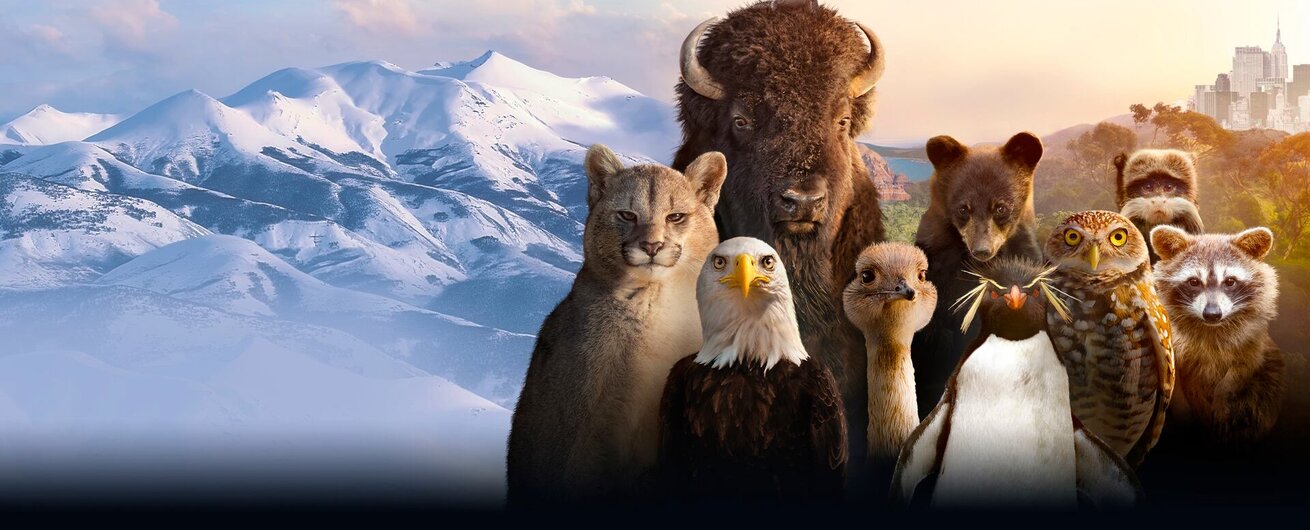Tom Hanks Explores the Secret Social Lives of Manatees on The Americas
Manatees are perfectly happy on their own, but when they get together, they play.
The West Indian manatee, also known as the North American manatee, is a large marine mammal native to the Caribbean, northern Brazil, and the eastern United States. They are gentle giants – stretching between 9 and 11.5 feet and weighing in at between 440 and 1,320 pounds on average – which use their sensitive whiskers to sniff out aquatic plants.
They hang out in shallow coastal areas like rivers and estuaries, and they can switch back and forth between saltwater and freshwater environments as desired, but they need to stay warm. Despite their rotund appearance, manatees lack any significant fat stores and rely on warm waters to stay comfortable and healthy. Every winter, they gather around warm freshwater springs bubbling up from deep underground.
Facetime with a manatee is a rare treat, but you can see them playing together up close, in the “Gulf Coast” episode of The Americas.
The freshwater spring hangouts of Florida manatees
Coasts are defined by their relationship with water and the Florida coast is no different. More than 150 billion gallons of rain fall over Florida every day, delivering life-sustaining fresh water and literally sculpting the landscape.
Rainwater is slightly acidic, and it eats away at the limestone, creating cracks, then chasms, and eventually expansive cave systems filled with fresh water. The Floridan Aquifer is poorly explored and dangerous, stretching 100,000 square miles across the entire state of Florida and into parts of Georgia, Alabama, Mississippi, and South Carolina.
RELATED: The Americas Highlights Superheated Rivers of the Andes & the Super Ducks Who Live There
The aquifer averages a depth of 1,000 feet beneath the surface but extends twice as far in parts. Despite the isolation and complete lack of sunlight, wriggling worms and blind salamanders the size of your pinky creep and crawl down there. At points, water flows out onto the surface, creating freshwater springs which maintain a balmy 72 degrees Fahrenheit, all year long. It’s the perfect place for manatees to hang out during the colder winter months.
How manatees bundle up to survive the Gulf Coast winters
Manatees are among the most beloved creatures on the entire planet. They’re massive, slow-moving marine mammals which graze aquatic plants, giving them the nickname “sea cow.” Despite their lumbering stature, they have only between 3% and 5% body fat. Moreover, their slow metabolism makes it difficult to maintain temperature. Instead, manatees regulate their body temperature by moving to warmer waters when the weather gets cold.
They spend some of their lives alone but return to the same springs every year, building bonds which can last a lifetime, 50 years or more. When manatees get together, you can see a number of different social behaviors, including the cavorting behavior captured in camera in the “Gulf Coast” episode of The Americas.
RELATED: The Americas Explains How The Marbled Four-Eyed Frog Dies and is Reborn Every Night
Cavorting is a complex social behavior which involves rolling alone or with a friend, grabbing onto peers, pushing the tail out of the water, and swimming back and forth quickly. It’s like a collective case of the manatee zoomies. It’s how groups of manatees have fun and, when in mixed company, how they flirt. When males are gathered at springs without any females, cavorting is a way to practice social skills and courtship maneuvers which will be crucial for their individual success and the continued survival of the species.
Other common manatee behaviors include milling, which is when a manatee lazily patrols the water with no clear direction or intent; pacing, which is when a manatee swims in tight circles; and subtler social patterns like touching noses, touching slightly, and following one another while milling.
That we can watch manatees playing and flirting at Florida springs is a testament to decades of conservation work. The species was listed as endangered in the ‘70s when fewer than 1,000 individuals remained. In the intervening decades, their status has been downgraded to threatened, following successful restoration efforts. Today, you can find thousands of manatees at more than 1,000 warm water springs spread out across the Gulf Coast.
Where to watch The Americas
New episodes of The Americas air weekly Sundays at 8:00 p.m. ET on NBC, and stream on Peacock the following day!



































